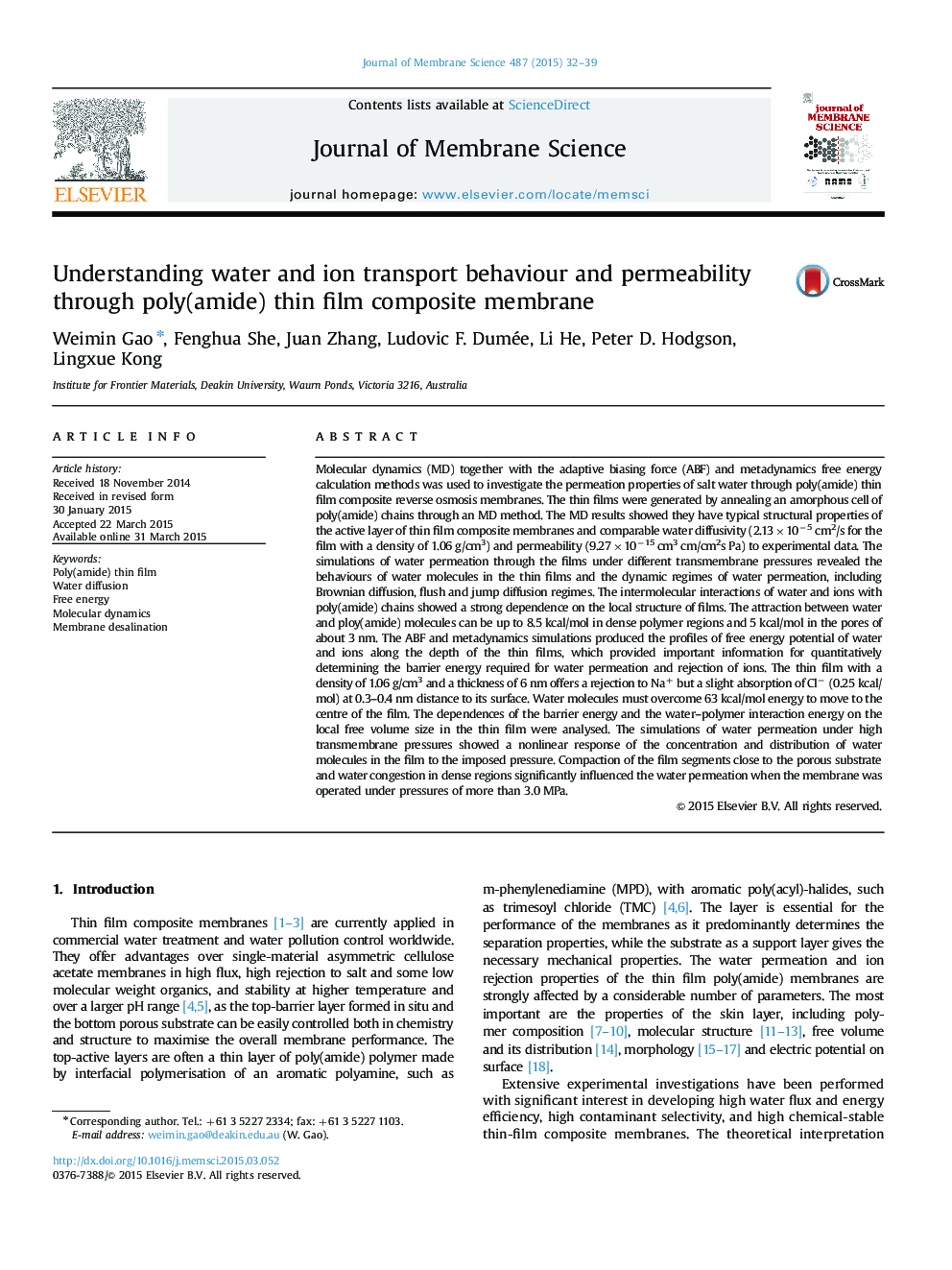| کد مقاله | کد نشریه | سال انتشار | مقاله انگلیسی | نسخه تمام متن |
|---|---|---|---|---|
| 7021295 | 1456012 | 2015 | 8 صفحه PDF | دانلود رایگان |
عنوان انگلیسی مقاله ISI
Understanding water and ion transport behaviour and permeability through poly(amide) thin film composite membrane
ترجمه فارسی عنوان
درک رفتار حمل و نقل آب و یون و نفوذپذیری از طریق پلاستیک کامپوزیت پلیم (آمید) غشاء
دانلود مقاله + سفارش ترجمه
دانلود مقاله ISI انگلیسی
رایگان برای ایرانیان
کلمات کلیدی
موضوعات مرتبط
مهندسی و علوم پایه
مهندسی شیمی
تصفیه و جداسازی
چکیده انگلیسی
Molecular dynamics (MD) together with the adaptive biasing force (ABF) and metadynamics free energy calculation methods was used to investigate the permeation properties of salt water through poly(amide) thin film composite reverse osmosis membranes. The thin films were generated by annealing an amorphous cell of poly(amide) chains through an MD method. The MD results showed they have typical structural properties of the active layer of thin film composite membranes and comparable water diffusivity (2.13Ã10â5 cm2/s for the film with a density of 1.06 g/cm3) and permeability (9.27Ã10â15 cm3 cm/cm2s Pa) to experimental data. The simulations of water permeation through the films under different transmembrane pressures revealed the behaviours of water molecules in the thin films and the dynamic regimes of water permeation, including Brownian diffusion, flush and jump diffusion regimes. The intermolecular interactions of water and ions with poly(amide) chains showed a strong dependence on the local structure of films. The attraction between water and ploy(amide) molecules can be up to 8.5 kcal/mol in dense polymer regions and 5 kcal/mol in the pores of about 3 nm. The ABF and metadynamics simulations produced the profiles of free energy potential of water and ions along the depth of the thin films, which provided important information for quantitatively determining the barrier energy required for water permeation and rejection of ions. The thin film with a density of 1.06 g/cm3 and a thickness of 6 nm offers a rejection to Na+ but a slight absorption of Clâ (0.25 kcal/mol) at 0.3-0.4 nm distance to its surface. Water molecules must overcome 63 kcal/mol energy to move to the centre of the film. The dependences of the barrier energy and the water-polymer interaction energy on the local free volume size in the thin film were analysed. The simulations of water permeation under high transmembrane pressures showed a nonlinear response of the concentration and distribution of water molecules in the film to the imposed pressure. Compaction of the film segments close to the porous substrate and water congestion in dense regions significantly influenced the water permeation when the membrane was operated under pressures of more than 3.0 MPa.
ناشر
Database: Elsevier - ScienceDirect (ساینس دایرکت)
Journal: Journal of Membrane Science - Volume 487, 1 August 2015, Pages 32-39
Journal: Journal of Membrane Science - Volume 487, 1 August 2015, Pages 32-39
نویسندگان
Weimin Gao, Fenghua She, Juan Zhang, Ludovic F. Dumée, Li He, Peter D. Hodgson, Lingxue Kong,
